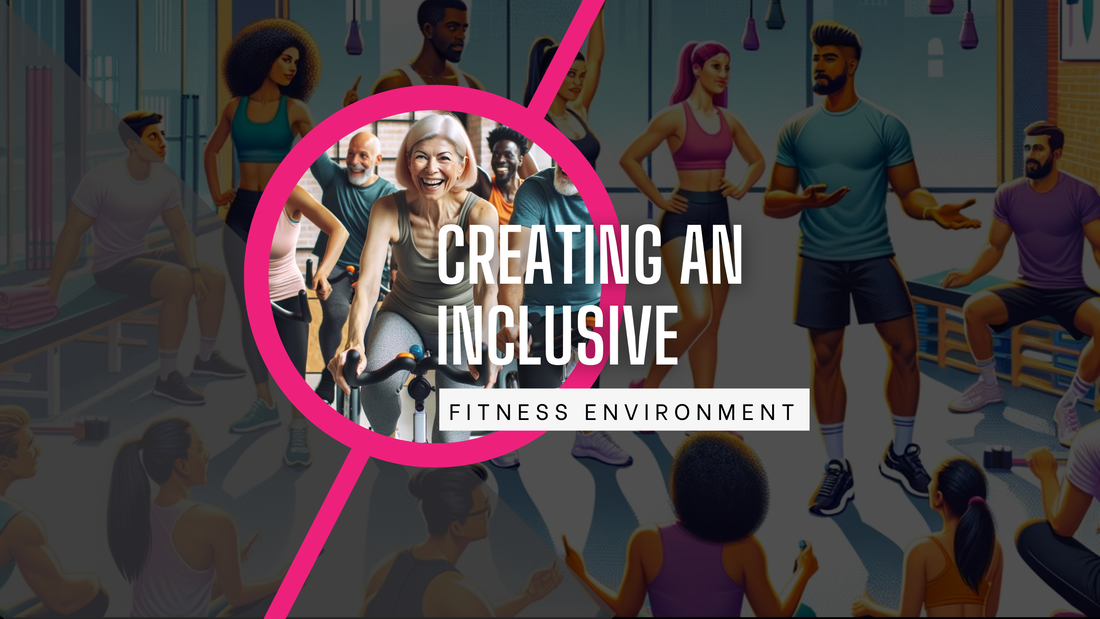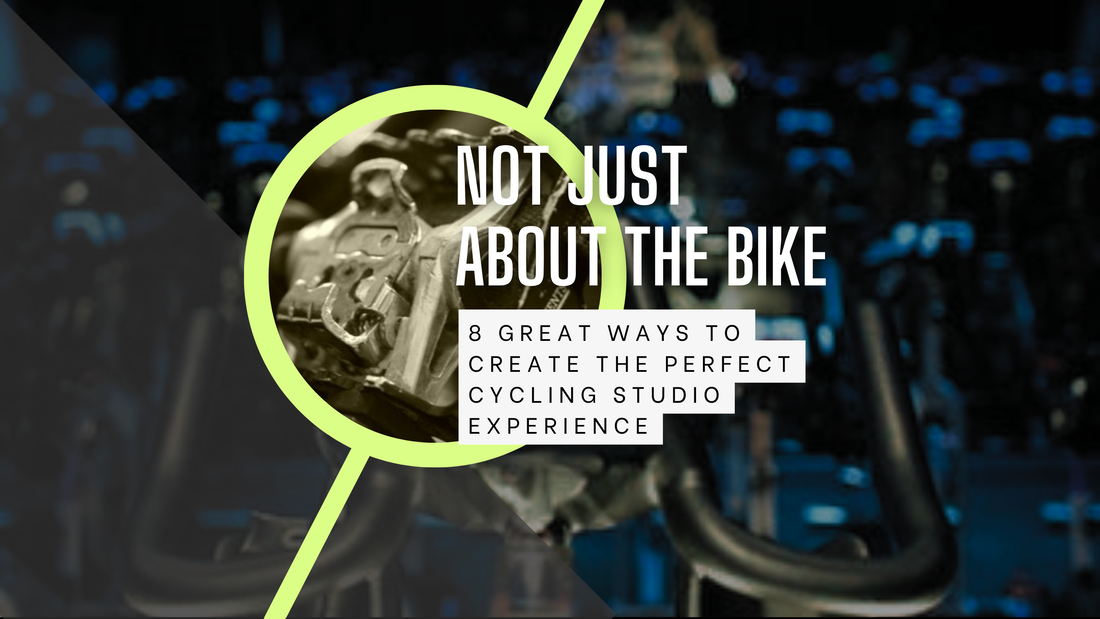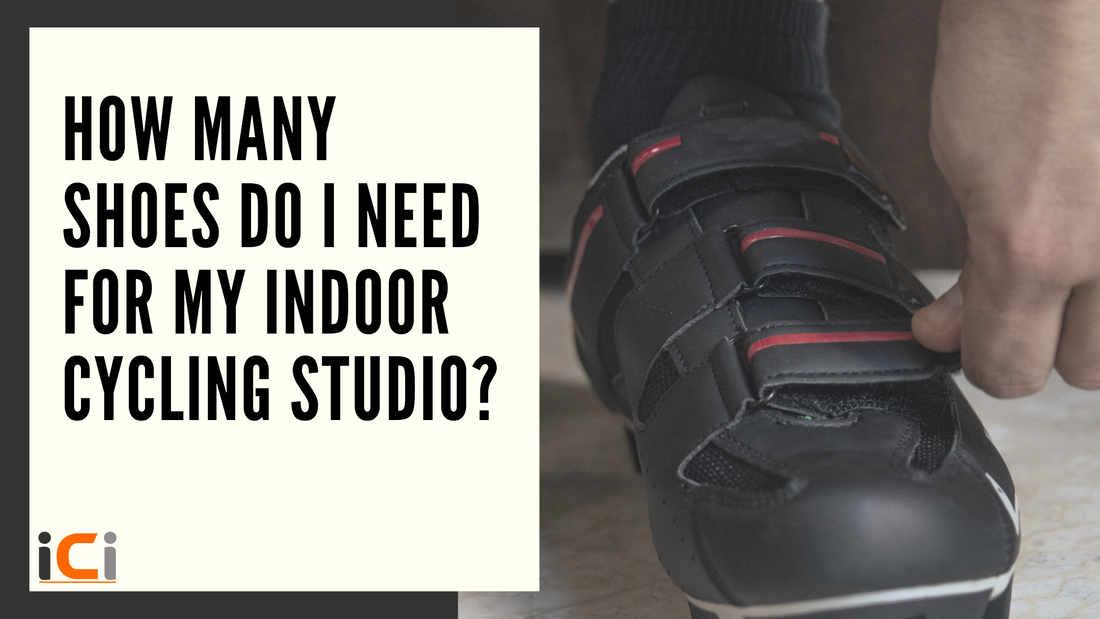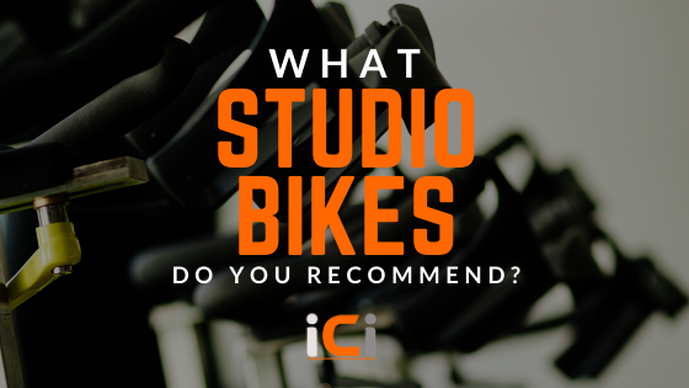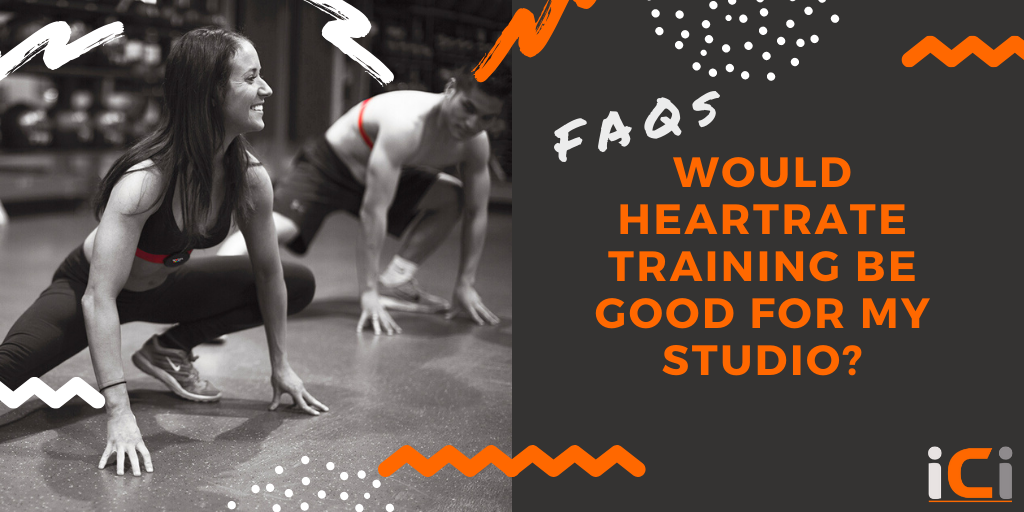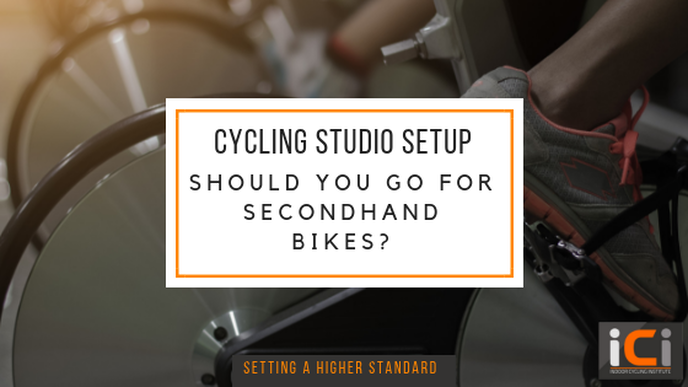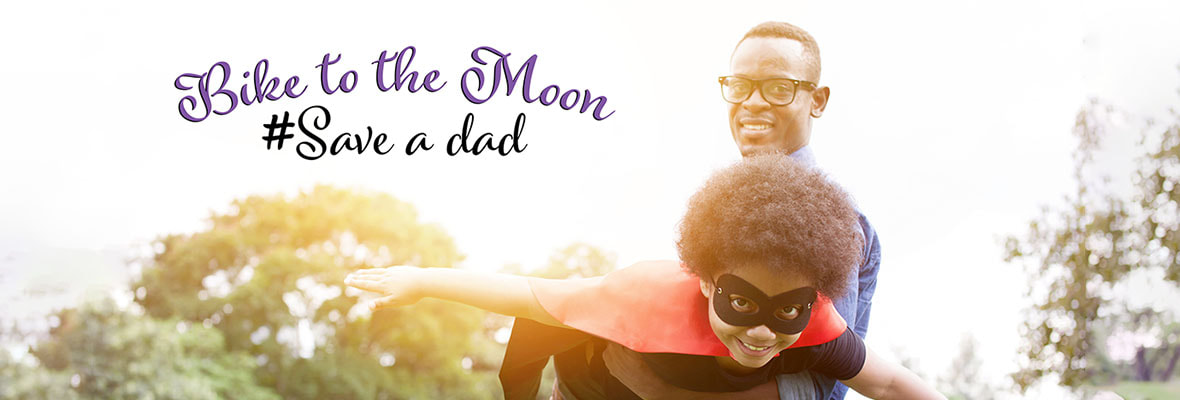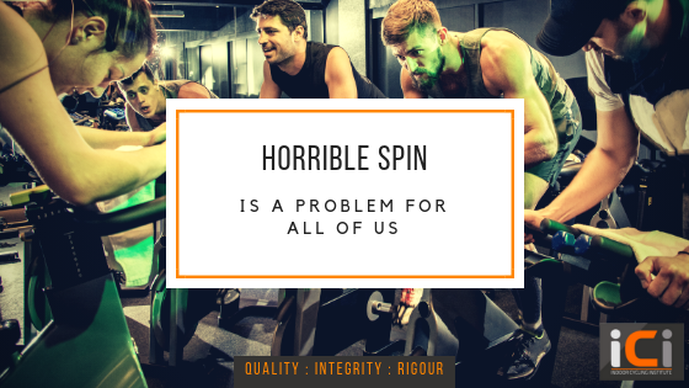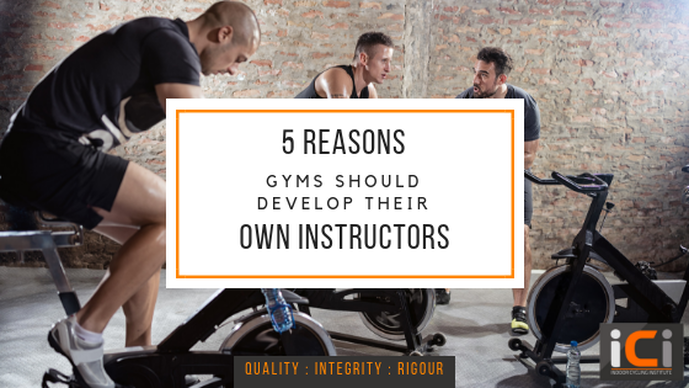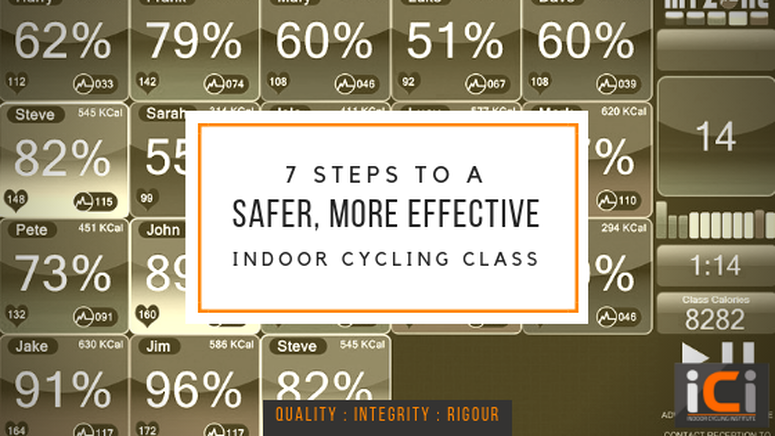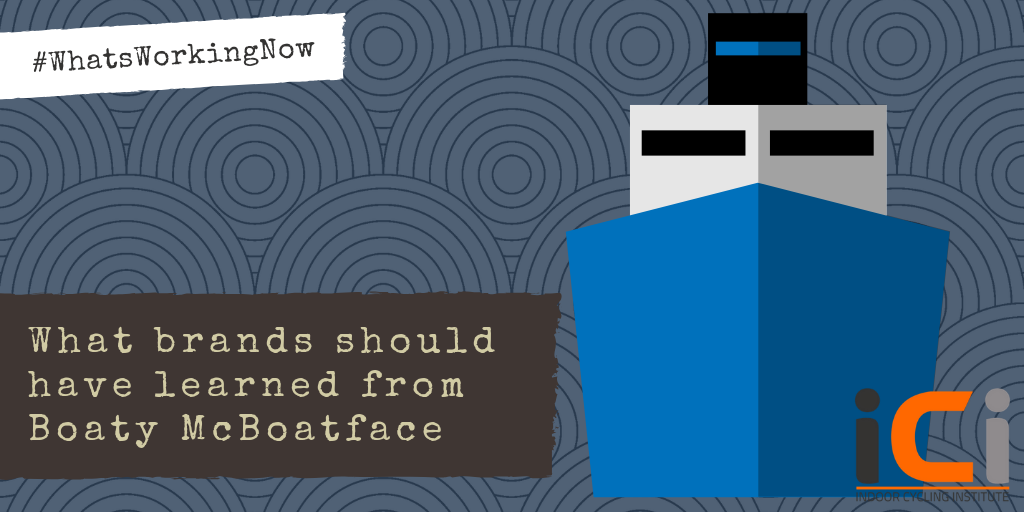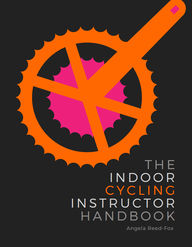|
Creating an inclusive environment is not just a commendable goal; it's an essential one. As advanced fitness instructors and managers, it's crucial to ensure that every individual, regardless of their background, feels welcome and valued in your classes. Inclusivity not only enriches the fitness experience for all but also promotes a sense of community and well-being. Let's see how to make classes more inclusive:
0 Comments
- Staff writer It's not necessarily all about the bike. Here are essential elements that every cycling studio should consider to create a memorable member experience.
How many shoes do I need for my indoor cycling studio?You'll be pleased to know that you don't need any!
Why? Personal preference Although some studios will provide these shoes, it's not common practice (for good reason, as you'll see) - and there's a risk there's that 'bowling alley' experience where actually sliding your feet into some secondhand already-sweated-in shoes is just what you don't need after a tough day at the office when you're ready to unwind (and sweat). OK it's not as bad as borrowing someone's toothbrush (sorry), but it's not far off. New riders When new riders arrive, they're frequently low in confidence, and it might be years since they were last on a bike (if at all) and probably they've heard horror stories of indoor cycling (they're as prevalent as childbirth horror stories, due to low quality instruction). What indoor cycling bikes do you recommend?This is a question we get asked a lot. And the answer isn't necessarily what you might think. We had an email from an ICI graduate and she said: "I have a quick question regarding bike choices as I have a friend who is looking to expand their gym to include a cycling studio. I’ve ridden Keiser bikes but they don’t do speed and the fly wheel is quite small so you never cover much distance. Do you have any recommendations?" I’d say that the major thing isn’t the bikes. There are a lot of studios with great bikes but the instructors have no idea what they’re doing, and so that asset is wasted (which if you bought the nice, expensive bikes, is heart-breaking!) First up, get instructors knowledgeable enough to run a proper class. Then you have to think about budget. There’s a studio in Cornwall which has very VERY basic secondhand bikes, but their instructors are really good, and they’re now thinking of upgrading the studio to have MyZone heartrate training, which I’d say is really the next thing to think about because you can use it for all types of classes, not just indoor cycling; it’s great for keeping members engaged, great for helping them to stay motivated to get more results – and it’s trackable so personal trainers and instructors can keep in contact. And it provides an accuracy that a lot of bikes just don’t have. Regarding bikes; there’s so much to look for, it can be a bit confusing. There are some metrics that bikes might have that aren’t that helpful – distance pedalled, speed, and time spent pedalling, and probably calorie burn are all metrics I’d like to see deleted from bikes, because they just don’t help. They’re usually all massively inaccurate, PLUS the distance travelled/speed thing usually has more to do with cadence than resistance – which means that if you have a competitive bunch of riders they’ll take all the resistance off and pedal at crazy cadences just to clock up the miles the quickest. It’s not good. It’s best to look for bikes that have a belt rather than chain drive. This means less maintenance. Wattbikes are nice, but very high maintenace because they’re like pianos when you move them and have to be ‘tuned’ each time. If you have a good cleaning routine in the studio, then these bikes are going to be move a lot. Plus you'll need Wattbike specific servicing. Weigh up the pros and cons - they're really nice bikes. For more on the details, we have a blog post here. It’s about secondhand bikes specifically, but it has some important bits in it. You know that we love the BodyBikes. They’re lasting well, and the maintenance is low because all the complicated stuff is in the app. They major on measuring power, cadence and heartrate – and you can record your sessions and share them (if you’re feeling braggy) from your phone to social media. But these are at the higher price end. BH bikes are good – you have to buy them by the pallet (I think 4 bikes at a time?) but they’re pretty reliable. The bits that go are always the console, so be prepared for that. The resistance is in gears which is really helpful for new riders, but not massively granular though, especially if you're wanting to do lots of power training. You need to think more about geometry than individual features unfortunately, because weirdly the bike companies don't invest much in this. Stages bikes are nice, but the handlebars don’t suit those with narrow shoulders (like me) because of the way they're shaped; if you're 5'6" or below, it's difficult to be able to get a decent bike setup as the handlebars might not go low enough in relation to the saddle. On taller or longer-legged riders, this isn't a problem at all. GymGear is at the lower price end, we tried these too, and really liked that you can get the saddle even lower than on a BodyBike (which is great for youngsters) but found that because the handlebars don’t go very far forward on their Forza model many taller or longer-backed riders will be a bit hunchy. The best geometry we found was on BH and BodyBike. And for durability, we like BodyBike best. There’s really a lot to think about – but first, it's vital to get instructors sorted so they really do know how to deliver a proper class. Next think about heartrate training because it’s not a big cost, it brings a return – and it massively improves the experience for everyone. After that, think bikes. But remember that even if the bikes are really basic, if you have good instructors and heartrate training, there’s a lot you can do with that. If you can't have accurate power on your bikes, then heartrate training is a great option - it's good to be able to have both, but if you have to choose, then go for heartrate training as it's so accessible for complete beginners and is best for improving motivation and helping riders understand more baout how they're functioning. Got questions? We're happy to chat indoor cycling for as long as you like! And as always we can offer further support (lots of it!) to ICI verified studios - we help you to excel.
by Angela Reed-Fox Coronavirus and indoor cycling - what you need to do to prepare/manage your studioThink about what gets touched (and breathed on) in the studio - saddle, handlebars, brake/resistance dial/gears, bottle cage, adjusters. Ewwwww. The problem with viruses (or one of them) is they can stick around for up to 24 hours after their previous host has left the building - ready to infect the next person. The virus will spread when someone else touches that same spot and ingests the virus. It's like 'Pass the Parcel' except way more gross. How is the virus ingested? It just needs to enter the body via the eyes, nose, mouth - and how easy is that, when you're using the towel you've hung on your handlbars multiple times in one session? There are simple steps you can take to help your riders stay healthy and keep the studio safe and clear for others:
ICI endorsed studios: you'll be receiving your branded template coronavirus policies - look out for them. Got a studio or gym? Find out more about how we can help you to deliver the best indoor cycling in your area.
by Angela Reed-Fox How do you price your indoor cycling classes?How do you determine what's a fair price for an indoor cycling session? Are you happy with what you're charging?
Pricing is important - get it wrong and you'll either be undervaluing your product or pricing yourself out of the market. Just like with resistance and cadence is in balance on a bike, the level of demand should be balanced by the price you're asking riders to pay. There's a sweet spot for both. I took a call today from an ICI instructor. He wanted to know: What's a good price to charge? - he's starting to instruct at a different studio; the bikes are quite basic, there are only a handful of riders who can ride at a time, the gym is new, and they offer gym only membership. What would you do? You need to focus on what you're actually offering - OK the bikes weren't necessarily top of the range, but if the instructor is good (as ICI instructors are!) then they can help any rider get great results with any bike. Studios will often over-invest in bikes thinking that if they've got the latest tech the classes will be brilliant. But if the instructors don't know what they're doing, that investment's wasted. The fact that the instructor I spoke to today is well-equipped, knowledgeable and passionate about giving riders the results they want, and that there aren't lots of bikes available in the class means riders are going to be getting a really top-drawer experience. This experience (and the gym's bottom line) could be improved by a small investment in heartrate training - perhaps with the MyZone system which provides extra motivation, retention - and a secondary income stream. Considering that the gym is seeking to increase interest in the gym by starting to offer indoor cycling sessions but not offer the classes necessarily within the membership, this creates an excellent opportunity. The ICI instructor is contracted by the gym and is incentivised to attract more riders by having a profit share from the classes. In this instance, it makes sense to have a core price that other offers can be compared with. For example, charging £10 per ride for a non-member, and giving members a discount on this yields two things:
Another thing you can think about is selling bundles of rides. Perhaps your newish rider wants to dip their toe in a bit more, but doesn't want to commit to the terms of a membership. In this case you could offer bundles that don't give the saving of a membership, but offer a small discount from a single ride price. Be aware though that anything that's between the 'benchmark' single ride price and what you want riders to go for (loyalty with a membership!) might deter riders from making that decision. You can also offer several-week programmes - perhaps a 'Little Black Dress' programme or a 'Winter Training Programme' - this would have riders signing up and committing to a particular session for a number of weeks. They pay upfront in one, and pay the same whether they turn up to all classes or not. If the gym decides to go down the MyZone heartrate training route, there'll be plenty of crossover as members can use it in the fitness suite as well as all of their classes, this will mean more riders to the cycling studio, as well as more riders exploring other parts of the gym - this approach generally works well for improving member experience, building membership base, as well as that always important bottom line. by Angela Reed-FoxStudio Manager questions: FAQs: Would heartrate training be good for my indoor cycling studio?There are huge benefits to be had with installing a heartrate training system in your gym or studio. If you shop around, you'll find that not only can you set up for a reasonable price, but you'll be able to generate a decent secondary income stream as well. The benefits are:
Can’t stress enough, heartrate training is a GREAT way to upgrade your studio without the huge investment of new bikes. And because a lot of places still don’t have heartrate training yet, you're ahead of the curve on something really good. Got a studio or gym? Find out more about how we can help you to deliver the best indoor cycling in your area.
by Angela Reed Fox Indoor Cycling Studio Manager question: Should you go secondhand for studio bikes?Setting up an indoor cycling studio? One way to get the party started is not to invest in the newest kit, but to go secondhand if there's a local opportunity.
You'll need to weight up the opportunity on its own merit - you need to be thinking about more than just the price. There are two main things to consider:
Are the bikes in reasonable condition? You really need to have a good look, and definitely do checks on all the ones you’re considering buying. The things you need to consider especially considering the price, are:
So that’s all stuff to work out if they’re reasonably priced. But you also need to consider how to future proof the investment you’ll be making in indoor cycling for your venue. Future-proofing your venue
It might be that you’re thinking of just getting some bikes in just to get started, and with a view to upgrading them in the next year or so – that could be an idea. It might be that you're considering secondhand bikes as a first step, to build your studio, and then to invest in better bikes further down the line. There’s usually a way round most things that are not ideal, we’ve found, and we’re happy to help you find the best approach for you. And also we’ve found that gimmicks definitely aren’t the way forward (there’s a reason why cycling studios don’t have bubble machines! We didn’t know this before we bought one when we first opened!) If you'd like us to help or offer advice, get in touch. We are keen to improve the quality of indoor cycling everywhere. It's a tremendously effective activity that can benefit a great variety of people when done properly - and we want to help you make it a success where you are. Of course the best investment you can make in your studio is ensuring your instructors are trained to a high enough standard that they are able to deliver safe, effective and effiicient classes that will boost rider motivation, results, and stickability. A good instructor will make the best of the bikes on offer - a poor instructor will struggle to create an effective class with even the best bikes on the market. We partner with venues to constantly improve their offering - and we endorse those who meet our standards and who are providing reliably good service to their riders. Ask us for more information.
10 Essential Tips for Indoor Cycling Workouts in the Summer HeatYes it's best not to let the weather sidetrack your riders from achieving their fitness goals. And yes, others may use the weather as an excuse. To keep maintain their progress, pass on these tips to get the most of working out in the summer heat. Click the link above for a pretty downloadable version. Hydrate, hydrate, hydrate. That means, pre-hydrate, hydrate, and post-hydrate. If you get hydration right, you'll avoid heat headaches. Get into the habit of being well hydrated every day. However it works for you - whether that's always having a bottle of water at your elbow, or having a drink with and between each meal, using a hydration app, however it works for you, build the habit. This is great for your brain, great for your skin, great for everything. And when the weather heats up, you're already on a roll. Over-hydration is a thing though. If you drink everything you can find, you'll be on the fast train to hyponatraemia, which happens when you pee out all that excess water (and sodium gets washed away with it). Drink to thirst during your workout - or take the hint of sipping (and definitely sip, don't glug) with each recovery section. Afterwards, maintain your healthy hydration habits - at least for the 24 hours after your workout, but if it's worth doing, it's worth keeping, right? Build the habit! Wear clothes! Yeah, not just any clothes - wear clothes that wick the moisture away from your skin, clothes that are light and loose-ish (but not flappy). Change your timetable Try earlier sessions before the day heats up. Early morning sessions enable you to get your stuff done before breakfast - in the coolest part of the day. Precooling Yep, it's a thing. Have an iced drink or a cold shower just before your workout if it's a really hot, humid day. There's evidence to suggest that this will also improve your performance (and who doesn't want that?!) You'll start your workout feeling fresher and cooler, and that feeling will last you just that little bit longer. Don't ignore your warm up "But I'm already warm!" Yes, you are, but one of the reasons we warm up is so that we're supplying more blood to muscles, which means they get more oxygen - and that means you can work harder and more intensely, giving you better results. You skip the warm up and you'll miss out. Fans are your friend If you're going to be working out inside, make sure it's somewhere that has fans not just air conditioning. Air con is no help at all when you feel hot during a workout. It's cold when you first walk in, but as soon as you're into your workout, you lose the benefit, and then when you head for your cool down, that icy air con blast hits you right when you need it least! Head for the fans. It makes sense - they're on when you need them, and off when you don't. Listen carefully Be body aware. Overheating can leave you dizzy, nauseous and clammy. It's unpleasant, and you can avoid it by turning down the intensity when your body feels like it's had enough. Sit out for a few minutes, or head for your aerobic heartrate zones - there's plenty of benefit to be had from working aerobically. Choose aerobic sessions when you're planning your week's workout. Cool down properly Don't rush off immediately after the workout bit. Take the cool down leisurely. Take time to bring your heartrate down. Make sure you're recovering to your lower heartrate zones before you start stretching. If you don't, you could feel dizzy or faint when you start stretching. Eat! Oh yes. Don't forget when you sweat, you loose electrolytes as well as water - and you'll need to replace these. If you don't have high blood pressure, then eating a portion of salted nuts, olives, crisps, or crackers will provide you with the sodium and carbs you body needs. Wee check! Check the colour of your urine - darker urine means you're dehydrated (think 'lager'). If it looks lighter and more like sauvignon blanc, then you're probably well-hydrated. If it's super-pale , you're at risk of over-hydrating (but this isn't particularly usual). If it's got a pinkish, brownish or other unusual tinge (and you haven't been eating beetroots or vitamin tablets) you might like to go and get that checked. And there we are. You're equipped to smash your fitness goals even in a glorious British summer (you never know, this could be it!) And of course, at ICI we're here to help. It's our thing to keep you happy, healthy, and get you even fitter than ever. Here's to summer! If you're an instructor or a gym manager, we can help you to deliver quality classes that are safe, effective and efficient. That's what we do. Click below to contact us: Endorsed venues: contact us for your co-branded guide.
ICI supports Tackle Prostate Cancer's Bike to the MoonWe're pleased to support Tackle Prostate Cancer's Bike to the Moon event to raise funds and awareness to tackle Prostate Cancer.
If you or your studio is running an event, click below to download our venue guide to help make sure your riders get the best experience. by Angela Reed-FoxBad indoor cycling experiences hurt everyoneBusiness Insider has just published an article by Aria Bendix entitled Spinning class can lead to back pain and even damage your hearing. There are still reasons to participate. Oh my golly gosh. Where to start... Unfortunately Aria's experience and what she writes about is still not history. It is still possible to play 'Bad Spin Bingo' in some places. So, what did Aria have on her bingo card?
First of all, there is no excuse for riders having this experience. And secondly, a few basic tweaks to the rider experience would transform the class from Bad Spin to World Class and make the workout safe, effective and efficient - Aria's workout was none of these. So, what should be changed? Proper rookie on-boarding This is a biggie. Instructors should know:
Aria was concerned about falling off. Studios who rent out cycling shoes are putting riders at increased risk of falling off as well as increasing the risk of injuries and muscle aches. Why? Because riders are not used to clipping in (or clipping out) and so there are issues here, but also, everyone's biomechanics are different. The positioning of the cleat on the bottom of the shoe can mean the difference between injury and a comfortable workout. Everyone's different. Cycling shoes are individual - like toothbrushes, only more so. ;-) Ditch the gimmicks The 'All Body Workout' complete with natty little weights that are actually lighter than the average gerbil? Ditch it.
Too loud? Well that's easily remedied - studios should have a fix on the volume level, a monitor to measure decibels, or a policy on music use. Or all three! Music adds atmosphere - but it can't do that when it's too loud, because then it's just noise. Better quality instruction Yes, of course if you're not sure what you're doing and you get on a bike and bob around for a bit, it's not going to be super-effective. But if you go to a well-instructed class, it flat-out works. We like tracking improvements, and we find in our public-facing studio that one of our 45 minute sessions is equal to about 70 minutes of cycling on the road in terms of calories burned. EPOC is more difficult to measure, but because we include high intensity intervals in a controlled environment (away from traffic jams, pot holes, and rest stops), this raises EPOC. Indoor cycling improves fitness by burning fat, building muscle, improving cardiovascular endurance. While all workouts done properly will improve health, the joy of indoor cycling (except for the banging tunes) is that you can make it harder as you get fitter. And my, can it get hard... Regarding improvements in health, we have seen riders who are diabetic reducing and coming off their diabetic meds, we've seen their cardiovascular risk shrink, their blood pressure, blood glucose (HbA1c) and cholesterol reduce, as well as their sensitivity to insulin increase. Yes. Proper indoor cycling does all these things. Effective indoor cycling requires an instructor who knows what he/she is doing. Agreed, spinning out at low resistance doesn't burn calories, and is unsafe - and that's why no decent instructor will suggest doing that. Likewise high resistance at a low cadence equally can overload the joints, and good instructors will not suggest this either. Good instructors know how to set effective challenges with the right cadence, resistance and technique to burn LOADS of calories (for me, at 52kg, burning 450 calories in a 45 minute session is usual. Most riders will burn more than me.) A good instructor will provide different options for riders. New riders will need more explanation, other riders may be recovering from injury, may be fatigued, or may be struggling to work hard and may need encouragement and direction to work at a lower intensity. This should be part of every session. No decent instructor is ever going to tell riders to 'pedal as fast as they can'. This is dangerous and encourages crazy pedalling with insufficient resistance. There's just no need. An instructor who initiates this sort of challenge is putting riders at risk of rhabdomyolysis which is usually seen as a result of crush injuries (from car crashes for example). It occurs when the body starts breaking down muscle tissue. The resulting large molecules of protein are filtered out through the kidneys and left unaddressed can cause kidney damage and in extreme cases kidney failure - requiring hospitalisation. It's that serious. It's rare, but it's seen when riders are being forced to work past their capacity and not take recovery breaks. A case was brought by Kaila Cashman against Soul Cycle in 2016 for precisely this reason. And it could have been avoided by safe, effective instruction. A more informed approach Using heart rate training software is best practice and keeps riders safe (we've found riders with previously undiscovered heart conditions through our use of heartrate training - some of whom went on to have surgery). Also, running classes with different focuses enables riders to really take charge of their workouts, and get the results they want by using a combination of high intensity intervals and aerobic training. The aerobic bit will burn fat, improving power to weight ratio as well as prompting the body to develop more mitochondria which enables the body to work harder at a higher intensity whilst burning lots of fat. And that higher intensity stuff? Great for building muscular strength, anaerobic capacity, and firing the metabolism. I'm always interested in hearing about riders' experiences of indoor cycling - especially new riders. I'd love to be able to just go around fixing things like a sweaty fairy godmother - but using feedback like this is one of the ways that we build new features into our courses and ensure that ICI courses are the most comprehensive and useful ones on the market. It helps us to support gyms who want to improve their offering, and I confess, I'm nosy. I just like to know what's going on, but it's important to remember that terrible experiences like these effect all of us. People are denied a super-effective workout and the results they deserve, instructors are denied the opportunity to change lives, and gyms are denied the opportunity to be an irreplaceable part of the health solution for many people - and if they're offering such risky classes, they're putting their riders in danger, and themselves at risk of litigation. Read the complete Business Insider article here. If you're an instructor or a gym manager, we can help you to deliver quality classes that are safe, effective and efficient. That's what we do.
Click below to contact us: by Angela Reed Fox 5 reasons gyms should develop their own indoor cycling instructorsIf you don't have a training strategy for your indoor cycling instructors, stick it on your to-do list - you're missing a massive trick. Opening the region's first boutique cycling studio, we were immediately faced with the issue: Where are we going to get our instructors from? And for the next year or so, we recruited any instructor we thought was suitable who had already done some form of indoor cycling training. We have between 12-15 instructors at any time, there's very low turnover, and the instructors pull together as an excellent team - it wasn't always like that, but here are the reasons why having an indoor cycling training strategy helped: Developing and upholding your brand This is huge. Just because someone looks OK on paper doesn't mean they're a team player. It doesn't mean they're going to care about your members as much as you do, and it doesn't mean they're going to take instructing for you seriously. You need to be able to trust your instructors to uphold your brand when you're not there. Because you can't always be there. If you have a strategy for recognising which of your regular riders would make great instructors and empower them to go do the training, you're going to have instructors who are already signed up to uphold your brand. Why? Because they already think it's great - because they're paying you for it. Added to that, it's a huge boost for them when someone recognises the greatness within! If you're thinking "Ah, but I'll lose members if I turn them into instructors!" Well, yes, you would move that person from the member column to the instructor column - but instructors who understand and love what you're doing and want to be part of it are valuable to you - and worth more than you'll lose in membership fees. In our public-facing studio, we do not recruit instructors from elsewhere - we always develop instructors from our member-base. It works. It cuts the risk of cliques, instructors undermining each other and bad habits brought in from elsewhere. Our instructors are good, we invest in them, and they help maintain the open, friendly and inclusive studio set-up. In return, we help to make them the best they can be. Quality control There are certain things that we didn't want our instructors doing in class - things that are still taught in some training courses. We'd had occasions where the response was "Well they like it at xxxxx". It's important to have your studio policy updated with banned moves as some dangerous and/or ineffective moves are still doing the rounds, despite the increased risk of injury and litigation. If you're developing your riders, you can set the training pathway. Obviously it's easy for us; our instructors-to-be go on our own course - because it's the only instructor course that reaches the quality standard we expect. If this is something you'd like to start - we're happy to work with you and provide discounts for the delegates you send to us. Instructor retention If you proactively manage your recruitment and training strategy, then you'll be able to arrange easily and seamlessly the succession planning for when an instructor leaves. Having said that, when you're developing instructors from your own membership, retention is much better, so not only is it less hassle, it's something you'll rarely need to think about. And that's going to save you both time and money. Instructor development How do you ensure your instructors stay at the top of their game so that you can stay at the top of yours? Most gyms don't even consider this, so if you do, then you're a step ahead of your competition. If you've got a training strategy, Save on training costsWhether you pay for the training or your instructors do, there are savings that can be made when you're buying several courses at a time. ICI offers a scheme whereby we partner with you to support you and your instructors, and as you invest in your instructors, we pass on discounts. We might still be the only training company to offer this. Want to bring together a cohesive team? Check out our preferred venues scheme. Click below:
by Angela Reed-Fox RN Managing dizziness in the indoor cycling studioIt's not just new riders that might feel a bit faint or dizzy when doing new indoor cycling workouts - if riders are increasing the intensity of their classes, they may experience the same symptoms. Here I'll explain why - and how to avoid the drama! Feeling faint during or after a class is not hugely rare. If riders are new to vigorous workouts, or they've recently upped the intensity of their workouts they're more at risk of feeling dizzy or faint during or after your class. There are two main reasons why you might feel dizzy. One is low blood sugar, and the other is low blood pressure. Low blood sugar Your facility should receive agreement that riders with diabetes will let you know before starting their class with you. Such riders are generally well aware of how to deal with 'hypos', and will come prepared. Generally it's the medication that causes the hypo, not the condition. If you're unsure, check with your venue that they're gathering this information from new riders. For riders who are not diabetic, low blood sugar is less likely to cause a problem. However, with sudden intense exercise, particularly at high resistance, this can see blood sugar levels dropping lower than normal. This can cause dizziness or faintness. Low blood pressure It’s often the case that people (mostly women) with low blood pressure can feel dizzy during or after exercise. This is because one of the way the body maintains an even temperature is by dilating the blood vessels to cool down - this is why your skin goes red when you're hot. Also when you're working hard at a high intensity, your muscles are also demanding a greater blood supply. This is perfectly natural, and usually OK - only if you usually have low blood pressure, in this condition, less of your blood is supplying your brain with oxygen, which makes you feel dizzy or faint. How to help and advise riders The gold standard is to provide written guidance from your venue. The following advice is useful: How venues can prepare:
Indoor cycling instructor? Click below for free CPD resources. Your venue can also receive information on how we can help improve customer registration, retention, engagement and profitability.
by Angela Reed-Fox 7 steps to a safer, more effective indoor cycling classYou'd think that'd be so easy everyone would be doing it, right? Well when we recently updated our entry level 2 day indoor cycling instructor course, we include a bit on litigation (because if you need your insurance, you're too late!) and as part of this we research court cases being brought against cycling studios and gyms, and we look for patterns in the reasons for the litigation, and who is being blamed. In more than 95% of recent cases (in the last five years) it's due to instructor error - instructors have either given poor instruction or have had riders doing unsafe moves. Incidentally the remaining 5% of cases is due to either the studio being too dark for riders to see what they're doing, or equipment being poorly maintained or with sharp prominences. What does this mean for you as an indoor cycling instructor? It means that there's a lot you can do to reduce the risk of injury for your riders, and litigation both for yourself and your venue. Here's how: Injury check There are three points at which each rider should be asked about injuries, health issues or concerns:
Bike setup All new riders need a bike setup - this is the perfect opportunity to answer any questions they have and help them feel comfortable. A suitable bike setup will reduce aches and improve comfort. Riders will be able to ride more efficiently, using more of the larger muscle groups as they pedal. This improves the calorie burn and the training effect. Consider jotting your riders' bike settings on record cards which they can refer to at their next session and have a go at setting themselves up. Think about data protection though and make sure you destroy old cards. Clear instruction In the interests of safety and effectiveness, this is essential. Riders need to know what you're asking them to do, as well as how. For a bonus point, you can also tell them why it's good for them! There are five main points you'll need to give them for each challenge:
Be kind, and don't forget to cue them in and cue them out. Safe cadence Cadence is a biggie when it comes to rider injuries. Safe cadence also requires safe resistance. What we need to particularly guard against is crazy high cadence with insufficient resistance . Not only is this totally ineffective, but it increases the risk of the rider losing control of the pedals. (Remember, the bike has a fixed wheel.) So, stick to a safe cadence range. We don't recommend going lower than 60rpm. Obviously it's possible to pedal slower than this, but what tends to happen at this point is that riders either don't have sufficient resistance to be pedalling effectively, or they have so much on they're unable to pedal any faster and are overloading their joints. We don't recommend going higher than 120rpm. But in fact, when we're instructing, we tend to encourage riders to add more resistance if they're reaching 120rpm, which will then bring their cadence down. Yes, it's possible to pedal that fast with riders who are experienced and have good coordination. However, you'll frequently see terrible technique starting to creep in when you reach this point, which decreases effectiveness, so I'd recommend avoiding going past this point with any riders, however experienced. Always give a cadence guide and let riders know how it should feel as well. Bouncing bottoms in the saddle are a dead giveaway - as are bikes that start squeaking when they're being pedalled fast with no resistance! It's OK to say "If I can hear your bike, you need to add on!" Avoid banned moves We have a list of banned moves. We strongly recommend that venues do this too, either by using ours or creating their own. We ban a move either because it's ineffective and therefore pointless, or because it's downright dangerous. Examples include:
Measurable progress How do riders know they're getting fitter? Remember that a lot of your riders are not in your class purely for enjoyment - they want and need results. What will you do? We recommend using power training so they can see measurable results. If we go by how we feel, this is too subjective and we'll get demotivated quickly. On the other hand, if we can point to actual quantifiable improvements, we're more likely to stay motivated as we can see our effort paying off. Ask us about our power training courses. Heartrate training Using heartrate training in classes is safer. Riders can get to know better how their bodies respond to activity, they know when they need to take it easier than usual, and when they can start pushing harder. They'll be able to detect when they might be overtraining, and they'll be able to stay within safe parameters as each session becomes tailored to them. Not only all this, but we've spotted instances of riders having anomalies which after medical investigation showed conditions being diagnosed such as atrial fibrillation and also blockages of arteries which led to surgery. So there we go - seven ways you can make your classes safer and more effective. Want help or advice on instructor practice or MyZone heartrate training? Get in touch - we're here to help you. Indoor cycling instructor? Click below for free CPD resources. Your venue can also receive information on how we can help improve customer registration, retention, engagement and profitability.
by Angela Reed-Fox GDPR - How we made a challenge into an opportunityOn the 25th of May this year, the GDPR rules which came in 2 years ago became legally enforceable. And that has seen companies rushing last-minute to secure data and data practices. Your inbox may have filled up with "Please allow us to keep sending you mail" messages. We suspected that this might not work. On the one hand, if a company felt it now needed to ask for permission to continue mailing someone - could it be possible that they hadn't asked for that permission in the first place? And secondly - what would make someone receiving the mail think "Yes, please keep sending me stuff I didn't originally ask for" actually click to resubscribe? We consider that adversity makes us stronger in life and in business, and also that restrictions can be a blessing by enabling us to concentrate our focus. With any challenge, we follow a 4 step process:
1. The definition We needed to check and possibly change the way we stored and use personal data (more on that another time) and also we needed to revamp our email marketing system. Although we have always acted ethically and fairly, as there was some confusion over what precisely the GDPR required, we recognised that we may need to delete or destroy some customer data, thus reducing the size of our list. 2. The possibilities We found this a good time to 'clean house', clean up our email list and customer database, and make sure our processes are watertight, and reinvent strategy, taking our marketing up a level. We considered this a perfect time to improve our strategy and re-engage with those who have signed up with us. 3. Make the issue something that works in our favour As we tightened our policies and streamlined our processes, we knew that we would be disengaging from those who had signed up with us, but who hadn't visited or engaged with us. We would be improving our email open rate (OR) and click through rate (CTR). We wouldn't have the costs involved in maintaining a larger list. We would have a streamlined list of engaged people who were genuinely interested in us and what we had to offer. There is a fallacy that the bigger an email list, the more profitable it is. There is another fallacy that the more those on the list are contacted, the more likely they are to buy. These two misconceptions are probably the main reasons businesses find email marketing doesn't work for them - when in reality it's a relatively cheap way to contact those closest to the business, keep them engaged and interested, and show them new things. 4. Test and test again. It's early days, but we're in the testing phase. What did we do? oing back to our boutique cycling studio where we test everything, we knew that sending an email to current registrants (those who had registered to use the cycling studio) and asking them to 'resubscribe' was not going to be successful. We defined success as eliminating disengaged or inactive registrants, and losing no more than 30% of our current engaged registrants.
So what we did was change our marketing strategy radically. Previously we had offers, promotions, discounts going out on all platforms, email, social, paid search, as well as in leaflets and magazines, and in the studio itself. We decided to ditch all of those platforms (not for marketing, but just for offers), we decided that all our offers were going to be accessible from only one place - the registrant's inbox. Why? Because this immediately added value to the emails we would be sending. If registrants knew that the offers would only come in this way, they'd be more likely to open and read our emails - improving our OR and CTR. We'd be changing behaviour by offering value. We created a new project. We called it 'JammyFox' implying the fact that only a particular few would be getting hold of our offers. by Angela Reed-Fox Attracting new indoor cycling customersAnyone who tells you this thinks business success is a lot easier than it actually is - and if it were this easy, everyone would be doing it. "Build it and they'll come" is a misquote of the phrase "Build it and he'll come" from the 1980s film Field of Dreams. In the business setting, it implies that all you need to do is bring a product to market for it to be successful. This completely ignores the fact that once the product is in the marketplace, it's then that you can do your most rigorous product-testing - on real customers. Listen to them - what do they like? Do more of it. What don't they like? Definitely do less of that. It's at this point that you can release new features you've been holding back. And it's also at this point that if your marketing isn't on point, the message just isn't going to get out there. How do you encourage them to come? Build your brand Your brand is the personality of the business. It is how your product 'speaks' to customers and those who are still to try it out. In today's uber-social marketing climate, you need a strong brand. You need quality interactions with your customers. If you ask for opinions on aspects of your brand or marketing, just be sure that the person understands what you're trying to achieve with your brand voice. Product Don't get too emotionally involved in the product you're offering. Yes you should love it - but at the same time you should be able to look at it critically and make necessary changes. If you can't be objective, find someone you can trust, and ask their opinion. Customer trajectory Are you offering an 'easy in"? Is it easy for customers to join in? Test the pathway - does it work? Is it easy for people to sign up or register with you? Is it easy for them to purchase their first class? Is there any information they might find helpful before they arrive - and if so, how do you ensure they get it? Marketing streams Don't rely on just one or two ways of getting your message out. Get your plans together and keep tweaking as the data comes in. More of what works, less of what doesn't. Processes Does everything happen that needs to happen in order to deliver your product to a happy customer?
by Angela Reed-Fox Indoor Cycling rider recruitmentAre you attracting enough new indoor cycling customers? A successful gym or studio is dependent on customer attraction, recruitment and retention. What's easily overlooked, however, is that for many of those who would most benefit from what a gym or studio offers, getting in isn't easy. They may have fear:
Here's what we tried, and what works: Logical trajectory Make sure (by testing!) that the onboarding process is easy, that the new registrant knows where to go, and reducing the chances of the person 'falling through the cracks'. Test and tweak - and make sure everything is easy. It's all very well putting 'contact us' on a social media post promoting a special offer - but unless you actually plant a specific link there, you'll be missing people. Always, always link to what you're pointing people to. Easy, trust-boosting sign-up Online registration is great because it means that as soon as someone has made the decision to join, they can do so straight away. We combined our registration process with a more comprehensive PARQ form, as well as our marketing permission (see how we did that here). Immediately the registrant can see that we have pre-empted many issues, they're provided with a nurse contact in case of medical queries, and they can see that we take their safety very seriously. We call the registrant on the same day of registering, and if they have signed up for our discount club, we add them immediately to that email list, and they receive their 'initiation guide', which lets them know what's what in the studio - what different classes are for, how the technology works, and a bit about the studio culture, and of course - our bikes! Informed staff When a new rider is attending a class, we let the instructor know, and we also pass on any relevant health or other information that the instructor will find helpful. Classes of different intensity This is the single biggest thing that has provided the easy "in" that has enabled hundreds to give us a try when usually the thought of indoor cycling would have them running in the opposite direction. As always, we tweaked our product as we saw how customers were interacting with the different class types. Originally we had classes for beginners, progressive riders and advanced riders. We noticed that some riders were reluctant to try different classes, even though working at different intensities is what we should be encouraging our riders to do. We tweaked! We replaced the original classes with a 'welcome' class for those completely new, a calorie burn (lower intensity but aimed at fat-burning), metabolic booster (aimed at using power and musuclar strength), and our performance classes for riders to improve their strength and stamina on the bike. This change gave riders 'permission' to try different intensity levels and find a mix that suits them. The 'welcome' class is typically a small one. We strongly recommend that every studio or gym has this type of class - it won't always pay for itself in the short term - you may only have a few riders trying it, but by giving them an excellent start, you're more likely to get them interested and coming back to the other classes. Measure the success of the 'welcome' class in terms of retention rather than profit. The profit comes from the other classes. Alternatives Occasionally we come across someone we know we can help achieve so much, who just doesn't have the confidence to start with even the gentlest class. One lady pulled up outside the studio in her car four times before plucking up the courage to come in. Even a 'welcome' class was a step too far. So we talked. We did a bike setup, we explained how the bikes worked, we explained the heart rate tech we use. We discussed what she needed - and what she wanted. And then she went home. She came back a couple more times and got on the bike and pedalled, and we ran a mini 5 minute class just for her. She then joined a 'welcome' class as she felt more confident. Where is she now? She's a member. Her husband's a member. Her daughter is a member. They come to lots of classes - and this only happened because we invested in her that time, and treated her as the special person she is. Always start well - and carry on. Choice, but not too much We found four types of classes were good - not too much choice, but enough for everyone to find what they need. In the same way, we have different payment options - single rides, bundles, or memberships. Keep it simple, and be prepared to explain.
Not enough choice is counter-productive. People don't want to be herded - they want choice, they want to be in control. Lead Magnets - how to make one for your indoor cycling studioWhat's a lead magnet and why do I need one?A lead magnet is an offer that encourages potential customers to sign up with you - either onto your email list, or to register with you. Lead magnets are useful because they increase your list of potential studio members and therefore the number of potential indoor cycling session purchases. Lead magnets are easily consumed, they are generally a short or bite-size piece of information that can be acted on immediately. They have high perceived value this is because they solve your target market's immediate problem, not only this, they are specific in supplying to your target market's need and showing them that you know what they need. They therefore have high perceived value for your potential clients even if they are provided at low cost to you - often they are evergreen, which means that they can run for as long as they are effective. Lead magnets can bargeted to a specific segment of your target market, and enable you to oposition yourself as an expert who can be trusted to provide exactly what your target market needs. Differentiating yourself from an increasingly competitive and crowded market is essential, and a lead market will help accomplish this. Types of lead magnets There are many types of lead magnets, but some work better in some markets than others. examples include:
Make your lead magnet
Lead magnet mechanics
by Angela Reed-Fox Indoor Cycling Studio issues: What brands should learn from Boaty McBoatfaceRemember this? The Natural Environment Research Council (whom most people had not heard of) launched a public poll for the naming of one of their new research vessels - and for a few months in 2016 they became famous. Or even infamous. Previously there had been other public polls for naming animals such as orcas and owls - but none seemed to go as viral as this one. A BBC radio presenter suggested Boaty McBoatface and this captured the imagination of the British public and the poll took off - with Boaty in the lead at 33% of the vote. The result? Boaty won the public vote, but this choice was vetoed; the research vessel was named the Sir David Attenborough and as a sop to the public, an on-board submersible craft was given the name Boaty McBoatface. What can brands learn from this? 1. "What could possibly go wrong?" Recognise that asking the opinion of the Great British public is potentially even more dangerous than working with children and animals. There's tremendous opportunity and likewise great risk. On the one hand, if you catch the public's imagination the possibilities are endless - but on the other, mess it up, and you're going to look ridiculous. 2. Build reliable pre-crisis planning into every project The results and subsequent action after the poll was concluded showed an astonishing lack of awareness of what were the possible or indeed likely outcomes of launching a public poll. The NERC suggested a few possibilities, but from these proposed options it was clear that they had absolutely no idea of the dark roads that public opinion was about to drag them down. They were then unprepared to deal with the inevitable consequences. Sun Tzu in the Art of War said a warrior should "know your enemy, and know yourself". NERC showed profound ignorance of both as the gap between what they wanted and what the public voted for was amusingly wide. They clearly didn't know themselves, and certainly weren't aware how out of touch they were with the public sentiment. 3. Never underestimate the Great British appreciation for irreverent wit During the pre-crisis planning which wasn't done, a quick internet search would have shown NERC that in previous public naming polls, the British value humour over pomp. Indeed in 2007, a poll to name a humpback whale resulted in Greenpeace reluctantly agreeing to name the mammal Mister Splashy Pants. A similar outcome nine years later was always probable. (In the event, Mister Splashy Pants earned 78% of the vote, with the rather more staid options of Shanti, Amal, Aurora, Mira and Kaimana only earning 1% each.) 4. Don't make an offer you're not willing to stand by. Only ask for an opinion if you're willing to take it. NERC didn't give the public parameters, it made suggestions but left the choices up to the public. By running the poll, NERC had two options:
4. Catch public imagination and surf the waves of popularity The viral nature of the poll should have sparked NERC's interest and had them seeing the possibilities regardless of the acceptability of the outcome. Allowing the public to name the vessel as inappropriately as it liked had the potential to create the first celebrity boat. This was a missed PR opportunity; children would remember into adulthood their school trips to see Boaty. It was a fabulous chance to spark the imagination of the next generation of marine explorers - and educate everyone else on what marine explorers actually do. It would have been a boat everyone had heard of. 5. Brand value doesn't have to come at a high price The internet and social media has enabled far faster viral spread of ideas. Advertising is far cheaper than it ever has been before - and publicity stunts pulled off well need not cost anything at all. There was immense value created by running this poll. So many got involved, had a vote, shared the poll with friends and colleagues, and talked about it amongst themselves. It captured the nation's sense of fun -and if you can do that, it's difficult to go wrong from there (although clearly not impossible!) 6. Opinions matter Polls and quizzes are popular because they invite opinion - and everyone has one of those! It also has the ability to create tribes. The tribe effect is evident in people voting and then sharing the poll, inviting others to join in too. A press release of the imminent launch of a research vessel could never have the same organic reach as a poll on the same subject. A poll taps into the twin desires of wanting to contribute, and wanting to be heard. The fact that the voices heard where then dismissed was the reason the entire PR project backfired. 7. So much to gain and yet so much was lost Instead of a PR victory which would see hordes of people keen to visit Boaty, schoolchildren's imagination sparked by marine discovery, a renewed faith in these research bodies of which we know very little, and the affirmation of the irreverence that Britain holds so dear - the result was negative:
Click below for free resources and to receive information on how we can help you improve customer registration, retention, engagement and profitability.
|
Categories
All
|
||||||||||||
Quick links
Get started
|
Find what's right for you
|
Courses
|
Further learning
|
More
|
The Indoor Cycling Institute provides the most comprehensive and up to date indoor cycling instructor training; providing entry-level courses, and further education to raise the standard of instructors.
© 2014-2024 Protheorem Ltd
The Indoor Cycling Institute is owned and operated by Protheorem Ltd Registered in England & Wales, Company number 12812092
The Indoor Cycling Institute is owned and operated by Protheorem Ltd Registered in England & Wales, Company number 12812092

